Get PeakVisor App
Sign In
Search by GPS coordinates
- Latitude
- ° ' ''
- Longitude
- ° ' ''
- Units of Length

Yes
Cancel
Share ×

Scan the QR code and open PeakVisor on your phone
❤ Wishlist ×
Choose
Delete
Dongyanshan National Forest Recreation Area (東眼山國家森林遊樂區) is an outdoor recreation destination located in northern Taiwan that’s known for its forested peaks. The recreation area contains 6 named mountains, the highest and most prominent of which is Dongyanshan (東眼山) at 1,217 meters (3,993 ft) in elevation.
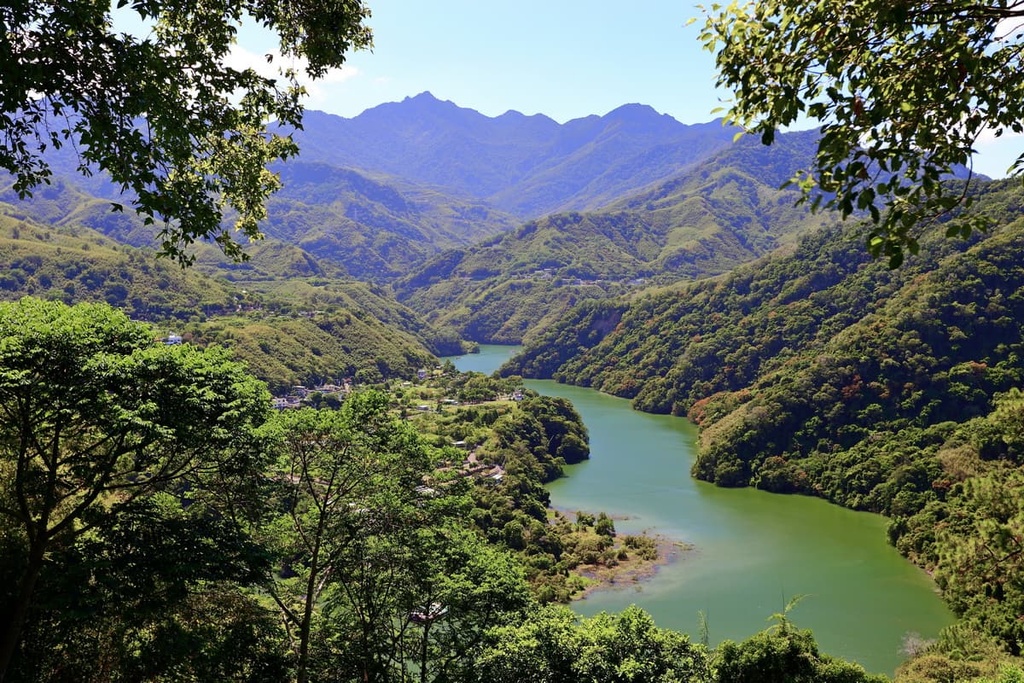
Dongyanshan National Forest Recreation Area is situated in the Fuxing District (復興區) of Taoyuan City (桃園市) in northern Taiwan. It contains a region that’s 916 ha (2,263 acres) in size.
There are six named peaks in the park, including Dongyanshan (東眼山). The other five peaks in the recreation area are Qinzi Feng (親子峰), Laka Shan (拉卡山), Hewei Shan (赫威山) Zhiji Shan (志繼山), and Kawai Shan (卡外山).
The park is home to a diversity of landscapes as it includes terrain that’s between 650 and 1,217 meters (2,132 to 3,993 ft) in elevation. Within the park, visitors can see a thriving mix of broadleaf and coniferous tree communities. The most dominant plants in the recreation area are the Japanese cedar, Taiwan beech, and rhododendron.
While Dongyangshan forest is situated in the rainy region of northern Taiwan, its yearly average rainfall is low for its geographical location. In fact, just 2,600 mm (102 in) of precipitation falls in the recreation area each year—substantially less than what you’d find at other nearby parks.
One of Dongyanshan forest’s main attractions is its collection of fossilized sea creatures that dates back to some 30 million years ago. Remnants of shells, sea urchins, and foraminifera can be seen from Dongyanshan’s exposed rock boulders. These fossils hint at how Taiwan was once submerged underwater.
In more recent years, Dongyanshan forest served as a logging base. Glimpses of its logging past are still present in the park’s woodlands. For example, old railway tracks stand disused in Dongyanshan, as do trolleys, ropeways, and the skidders that helped transport the heavy logs to the cities.
Many bird species inhabit the leafy forest of Dongyanshan. As a result, the recreation area attracts birdwatching enthusiasts who love to take in the serenity of nature and observe these merry, chirpy creatures in their natural setting.
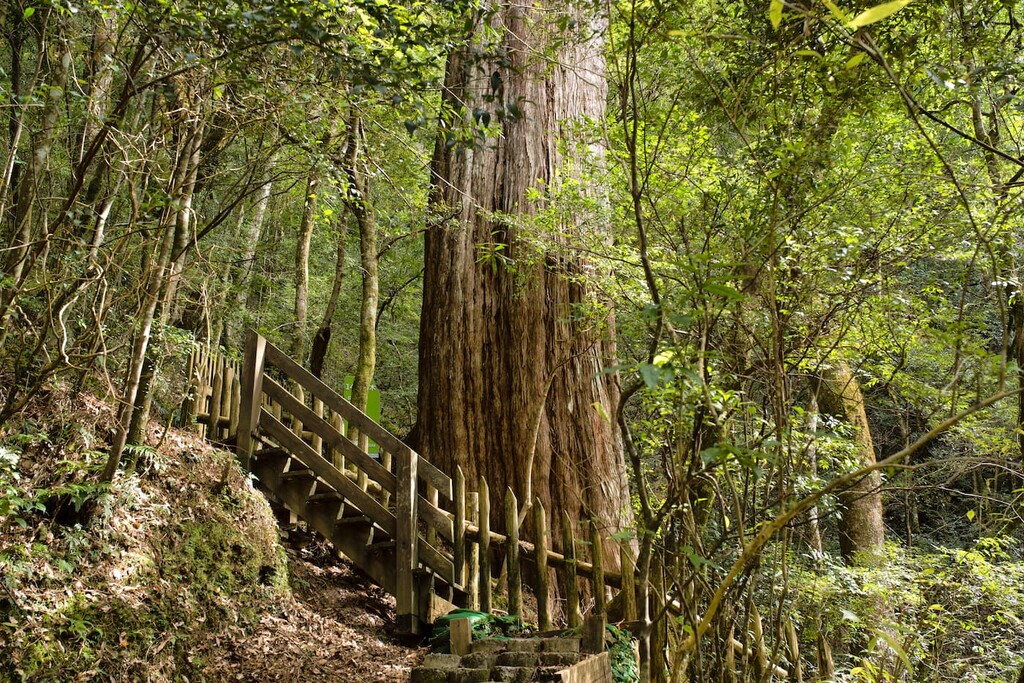
Dongyanshan also features many impressive trails, including the popular Dongman Trail, which leads to the eastern Manyueyuan National Forest Recreation Area (滿月圓國家森林遊樂區). These two protected areas are located adjacent to each other and they both share a similar human and natural history.
The nearby Manyueyuan forest was also a logging base in the past; however, business halted in Manyueyuan and Dongyanshan once the Japanese discovered the pristine woodlands of Alishan (阿里山國家森林遊樂區), Basianshan (八仙山國家森林遊樂區), and Taipingshan’s (太平山國家森林遊樂區).
Another nearby park that’s worth checking out if you’re traveling to Dongyanshan is Chatianshan Nature Reserve (插天山自然保留區), which is located to the south. Alternatively, you could visit Jiaobanshan Park (角板山公園), which is located to the south of Dongyanshan.
The mountains in Dongyanshan National Forest Recreation Area are part of the northern extension of the Xueshan Range (雪山山脈). The Xueshan Range is Taiwan’s second-largest massif and it contains Xueshan (雪山), Taiwan’s second-highest peak.
The large quantities of fossils found in the rocks within the recreation area, which are mostly Miocene shales and sandstones, provide us with a glimpse of the region’s geologic past. Many millions of years ago, Taiwan was submerged with seawater until the collision of the Eurasian and Philippine Sea plates helped to create the island that we know of today.
This tectonic collision also created many of Taiwan’s mountain ranges, including the Xueshan Range, Central Mountain Range (中央山脈), Yushan Range (玉山山脈), Alishan Range (阿里山山脈) and Hai’an Range (海岸山脈).
Dongyanshan’s forests are primarily dominated by broadleaf tree species, such as green maple, camphor, weeping fig, and Taiwan beech.
However, at higher elevations, the plant life in the recreation area transforms into a temperate coniferous forest of Taiwan fir and Japanese cedar. That said, the forests on Hewei Shan forest are home to the lowest elevation community of enormous red cypress trees in Taiwan.
As you hike along the lower-elevation trails in the recreation area, you’ll also see dozens of different smaller shrubs and other plants, such as Aunt Taro, longleaf ginger, mountain hibiscus, and bayberry.
The forests of Dongyanshan are also home to many wildflowers that serve as a graceful welcome in the blossoming months of spring and summer. An impressive variety of orchids grow in Dongyanshan, such as the single-leaf orchid, white egret orchid, and the common spotted orchid. Verbena, lavender, and hydrangea also thrive in the park’s environment.
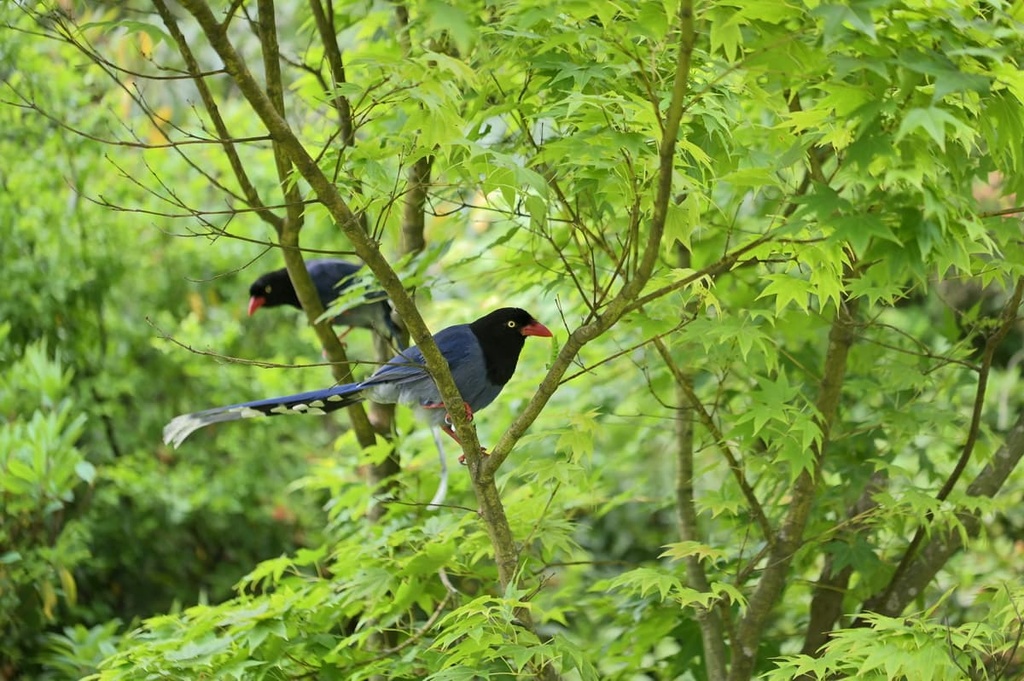
Dongyanshan is also a haven for birdlife, as it is home to 43 recorded bird species. The most prevalent birds in the recreation area are the Taiwan laughing thrush, yellow tit, and the Taiwan bush warbler.
A thriving amphibian population resides in the forests of Dongyanshan, too. Some of the many amphibians found in the park include the Taipei tree frog, spotted tree frog, and orange-bellied tree frog.
Dongyanshan National Forest Recreation Area was a former logging base during the Japanese Occupation Era. However, you can still see evidence of this logging activity in the park today thanks to artifacts like wooden ropeways, wooden horse trails, clusters of old timber, and charcoal kilns that have been preserved over the years.
There are also a number of historic trails in the region, such as the Dongman Trail, which links Dongyanshan forest to the nearby Manyueyuan forest in the west.
Japanese loggers originally used this trail to transport logs to Manyueyuan. From there, these logs would then be shipped to the old riverside market town of Sanxia (三峽) in New Taipei City (新北市). However, the original purpose of this trail was something else entirely.
The trail was originally created by the Indigenous Atayal tribe, who have lived in the region for countless generations. Two separate Atayal communities created the Dongman Trail in order to establish better relations between their villages. The hope was that the creation of this trail would lead to increased rates of intermarriage between the communities over time.
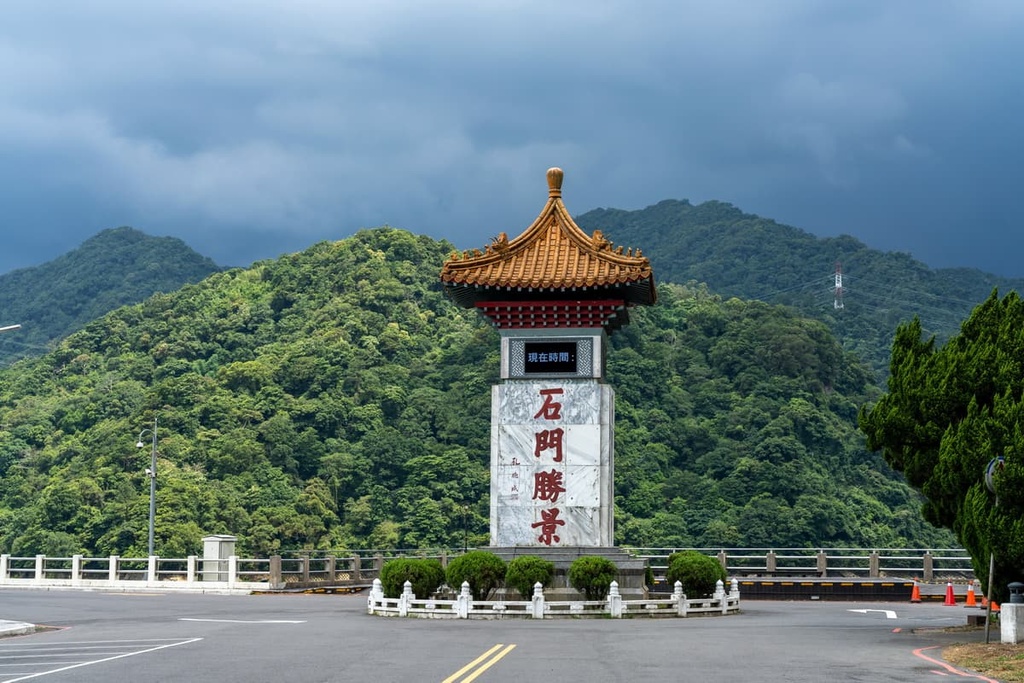
Dongyanshan National Forest Recreation Area offers an abundance of verdant trails for visitors to explore. The major hiking trails and areas are:
Also known as the Self-Guided Trail, the Dongyanshan Hiking Trail begins at the park’s visitor center and runs for 3.5 km (2 mi) before reaching the summit of Dongyanshan. The trail passes by the hillside charcoal ovens that were once used to burn down the forests of Dongyanshan so that the Japanese could plant an artificial cedar grove.
Additionally, like many of Taiwan’s forested areas, Dongyanshan is a superb place to partake in the rejuvenating ritual of forest bathing. A term coined by the Japanese, forest bathing is a process of unwinding and relieving everyday stress by submerging oneself in nature. Just like soaking in a warm bath, forest bathers believe that an invigorating woodland walk can melt away one’s tension and renew one's energy.
This trail gains approximately 300 meters (984 ft) of elevation, so it's’ best for more experienced hikers. You will also have to ascend a series of steps to get to the summit of Dongyanshan, so a bit of stamina goes a long way on this trail.
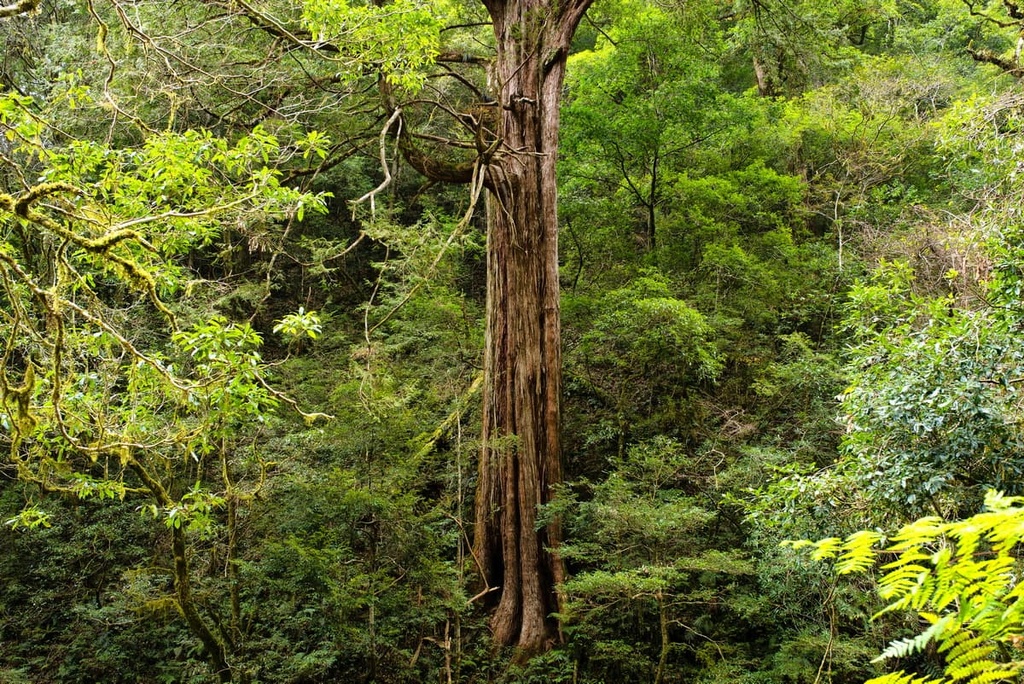
Dongyanshan offers sweeping views of the surrounding terrain, as you can see Taoyuan as well as nearby New Taipei City from the summit. You can also see the Manyueyuan National Forest Recreation Area, the Tamsui River (淡水河), Taipei (臺北市), and even the Taipei 101 from the summit on a sunny day.
The southernmost hill in Dongyanshan forest shares land with Chatianshan Nature Reserve, where you can find the famed Hewei Giant Trees, a group of ancient Taiwan red cypress trees aged between 800 to 2,000 years old. Consisting of 100 trees, Hewei Giant Trees is Taiwan’s lowest large tree grove.
One tree, in particular, is most striking, which is known as the Eight Immortals Giant Tree. It consists of eight trees huddling in a circle that have grown close together, almost to the point where they look like one colossal tree. At the front, there is a small opening between two trees, where you can enter and marvel at the circular vertical tunnel that reaches towards the sky.
The nearby peak of Bei Chatianshan (北插天山) is a popular trail if you seek a more grueling challenge than Dongyanshan’s gentle hills. With an elevation difference of over 500 meters (1,640 ft), you can gain extraordinary views from the clearings along the trail to Bei Chatianshan; however, its overgrown peak provides no vistas.
You can observe the flourishing flora of Dongyanshan and Manyueyuan’s woodlands from Bei Chatianshan’s Hiking Trail while enjoying views of the gentle peaks of Dongyanshan, Laka Shan, Hewei Shan, and Manyueyanshan (滿月圓山) undulating across the landscape.
The trail to Bei Chatianshan is divided into two parts. The first section is relatively easy as you will tread on a gentle path to ascend its thriving woodlands of Taiwan beech. The second half of the trail brings you to an intense course of vertical cliffs and slippery paths. After heavy rainfall, the track is almost unmanageable as its steep muddy slope proves demanding to ascend.
A coniferous redwood forest signals that you’re nearly done with the trail. Once reaching Bei Chatianshan’s summit, you can feel pride for successfully climbing the mountain’s notoriously steep slopes.
One of the advantages of starting the Dongman Trail from Dongyanshan National Forest Recreation Area is that the 7.8 km (4.8 mi) track heads downhill toward Manyueyuan National Forest Recreation Area. For a leisurely forest walk through the dense enchanting woodlands, the eastward trending Dongman Trail trek is a great option.
This semi-circular path dips southward to Bei Chatianshan’s deciduous beech grove before heading northwards to the Manyueyuan’s broadleaf paradise. You will be rewarded with a rich ecology of thriving plant life and wildlife along the path. Bird spotting is a prime activity for hikers as they wander through the lush forest paths that connect Dongyanshan, Bei Chatianshan, and Manyueyuan.
While most of the route is covered in greenery, there are moments where you can stop and admire the natural landscapes of waterfalls, bubbling creeks, and Taiwan’s famous sea of clouds.
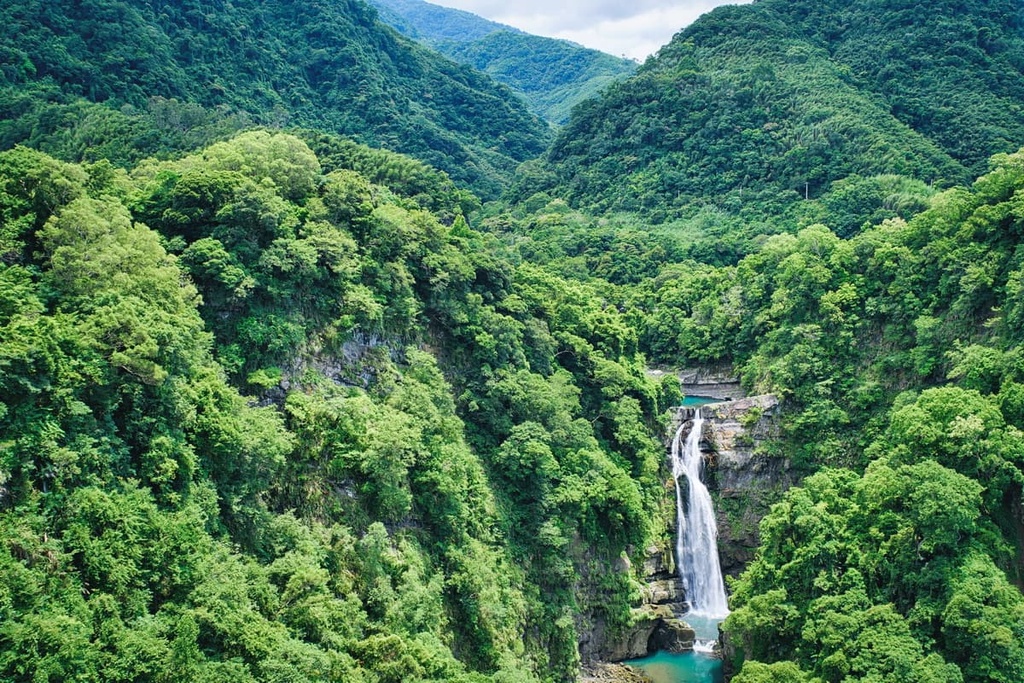
A rugged trail connects the three peaks of Zhiji Shan, Dongyanshan and Laka Shan. This trail then heads upward toward Kawai Shan before reaching the Zhiji Shan Trailhead. Parts of this lengthy 18 km (11 mi) route share the same path as the Dongyanshan Hiking Trail and the Dongman Trail.
Hikers seeking an adventurous day of trekking through pristine, verdant woods and scaling four mountains for extensive views over Taoyuan, New Taipei City, and even Taipei are drawn to this abundantly luscious trail.
Zhiji Shan is the first hill on this climbing itinerary. While the overgrown summit provides limited views, you will pass through a magnetic emerald Moso bamboo community of branchless trunks and tufted leafy foliage. A towering cedar woodland will await you as your journey to the summit draws near.
You will then begin on the trek to Dongyanshan, following the same route as the Dongyanshan Hiking Trail. The enriched phytoncide mountain forest leads you to the summit, where a clear 360-degree field of view stretching to iconic Taipei 101 awaits.
From Dongyanshan, you can then follow the Dongman Trail as it leads southward. Instead of trekking to Bei Chatianshan, you will ascend Laka Shan’s steep slopes. You can observe Dongyanshan and Zhiji Shan in the north, Manyueyuanshan to the east, and New Taipei City’s fertile forested fields from the summit.
The trail then snakes northwards toward Kawai Shan, where you will pass Dongyanshan forest’s famous fossilized boulders. While Kawai Shan’s summit is overgrown and offers limited views, the last part of the trail is a blissful venture through a flourishing rhododendron forest from where the trail returns to Zhiji Shan’s Trailhead.
The adjacent woodlands of the Manyueyuan National Forest Recreation Area are well-known for their steep waterfalls, flourishing Japanese cedar forests, and its crimson fall foliage.
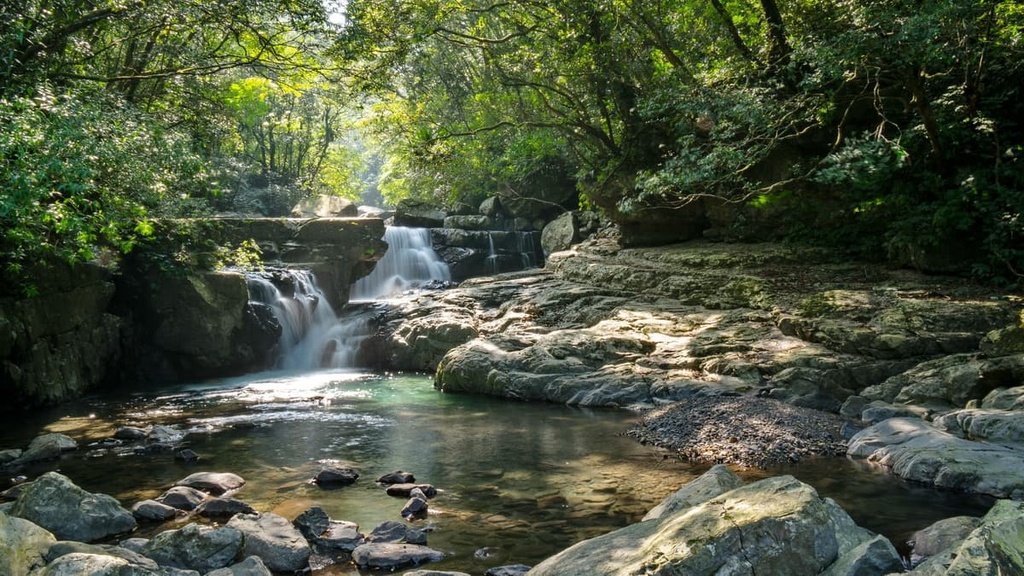
Forest bathing enthusiasts are in for a treat in this area, as the forest of Manyueyuan generates the highest amount of negative ions in Taiwan at 1,854 ions per cubic cm (113 ions per cubic in).
The lush, leafy cedar groves and the thunderous falling rapids in the recreation area are the two places where you can reap the benefits of phytoncides and anions. It’s said that these phytoncides and anions can cause any tension that you feel to dissipate gradually into the misty air.
While autumn dazzles with a display of wine-red leaves, spring and summer are equally scenic months as Manyueyuan’s wildflowers begin to bloom, painting pastels across the thriving emerald forest.
Taoyuan City and New Taipei City are the two most convenient places to stay when visiting Dongyanshan National Forest Recreation Area. Here’s what you need to know about each city before you set off on your trip.
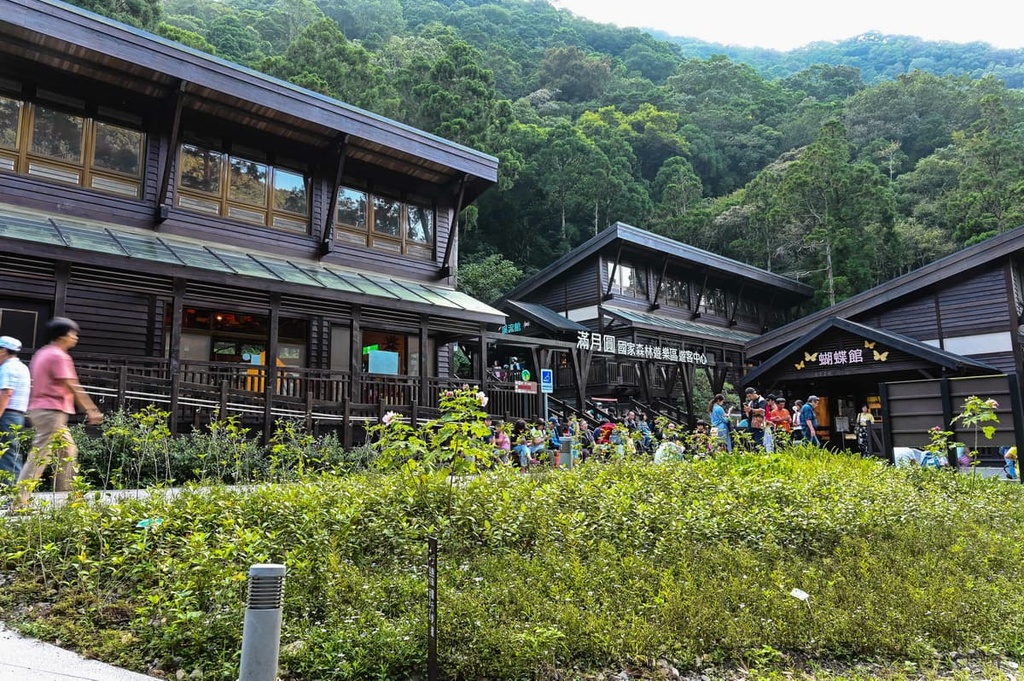
International visitors are most likely to touch down at Taiwan Taoyuan International Airport in Taoyuan City. While most travelers will venture to Taiwan’s capital, Taipei, Taoyuan City has a lot to offer to visitors thanks to its beautiful scenery.
Located near Dongyanshan National Forest Recreation Area and Taoyuan City is Xiao Wulai Scenic Area (小烏來風景特定區). Xiao Wulai’s primary feature is the cascading Xiao Wulai Waterfall, which you can view from a stunning glass-floored skywalk.
Another great place to check out near Taoyuan City is the wooded Chatianshan Nature Reserve. The reserve is home to Lalashan (拉拉山), which features ancient and enormous red cypress tree grove that’s actually located within the city boundaries. The oldest tree in the grove actually predates Confucius as it is 2,800 years old. Meanwhile, the largest red cypress in the grove is 41 meters (135 ft) tall and has a circumference of 9.8 meters (32 ft).
Or, for a short foray into nature, consider taking the 1 km (0.6 mi) long woodland path that leads to the thermal waterfall of Sileng Hot Spring. This 15-meter (49 ft) high waterfall tumbles over a cliff of metamorphic rock wall that bears striking colors of rusty orange, lime green, and milky white. While here, you can also soak in the steamy turquoise pool below the falls while admiring the surrounding rhododendron forest.
In the city itself, Taoyuan locals flock to the idyllic Shihmen Reservoir to enjoy its picturesque scenery.
For those seeking a more active day at the lake, the 8 km (5 mi) Xizhou Mountain Trail is a superb hike to consider. Although the trail takes you through a dense acacia forest, the views from the summit are worth hiking for. From the summit of Xizhou Shan (溪洲山), you can see the Shihmen Reservoir below and even the Linkou District (林口區) in New Taipei City.
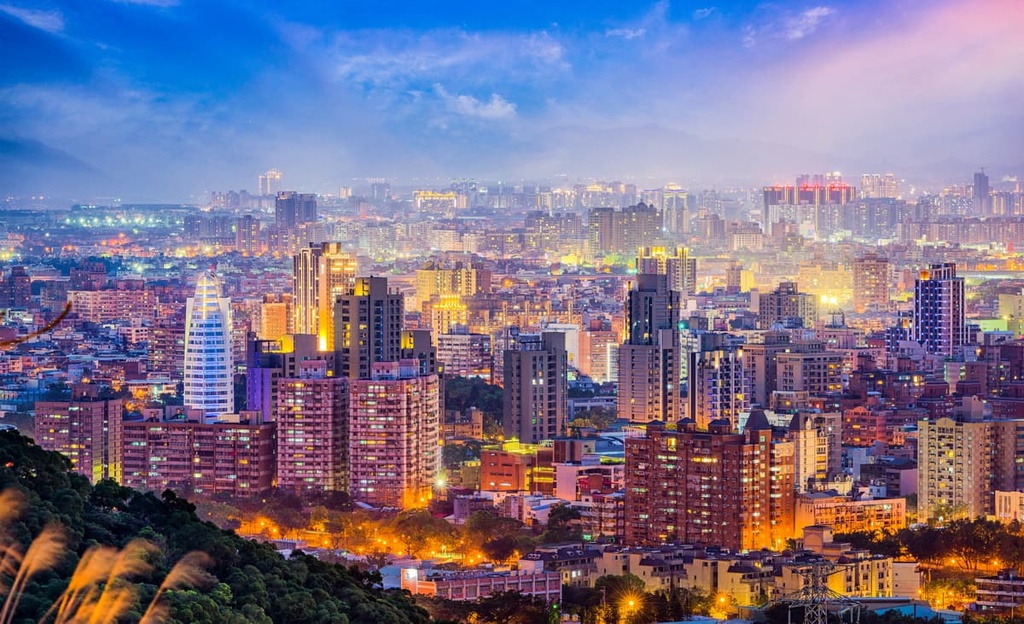
Alternatively, the Window on China Theme Park is a fun day out for families and people of all ages in Taoyuan. With over 20 rides to choose from, there is something for everyone to enjoy in the park. The Water Park contains the highest water flume ride in Asia at 12 stories high. The best part? If you visit on your birthday, access to the park is free!
Being situated closeby to Taipei, New Taipei City offers the best of both worlds with its plethora of scenic, untouched landscapes and its great access to the thriving heartbeat of Taipei’s metropolis, which is located just a short train ride away.
Not to be confused with Taoyuan City's Xiao Wulai Scenic Area, New Taipei City's Wulai is a mountainous village known for its breathtaking nature. The 80-meter (262 ft) high Wulai Waterfall is one of the star attractions in the area. To witness Wulai’s incredible scenery, you can board a cable car to access Wulai Waterfall while admiring the stunning landscape of cobalt river valleys and vibrant leafy hills.
Another scenic place of undisturbed beauty is the bountiful woodlands of Qilanshan Nature Reserve (棲蘭野生動物重要棲息環境). Qilanshan (棲蘭山) and Songluo Lake (松羅湖) are two attractions in the reserve that sit right above the boundary line of New Taipei City. Songluo Lake was once an Atayal tribal hunting ground, but it is now a popular hiking trail and camping spot.
Located on the outskirts of Taipei is the Xindian River and the Bitan Scenic Area. This spot is highly accessible as it's a located just short walk from the Xindian MRT Station. The Xindian Suspension Bridge is a prominent landmark in the area that stretches over the vast waterway. For a fun-filled day in the scenic area, you can hire a paddleboat to venture down the aquamarine river and discover remote pockets of nature that are not accessible by foot.
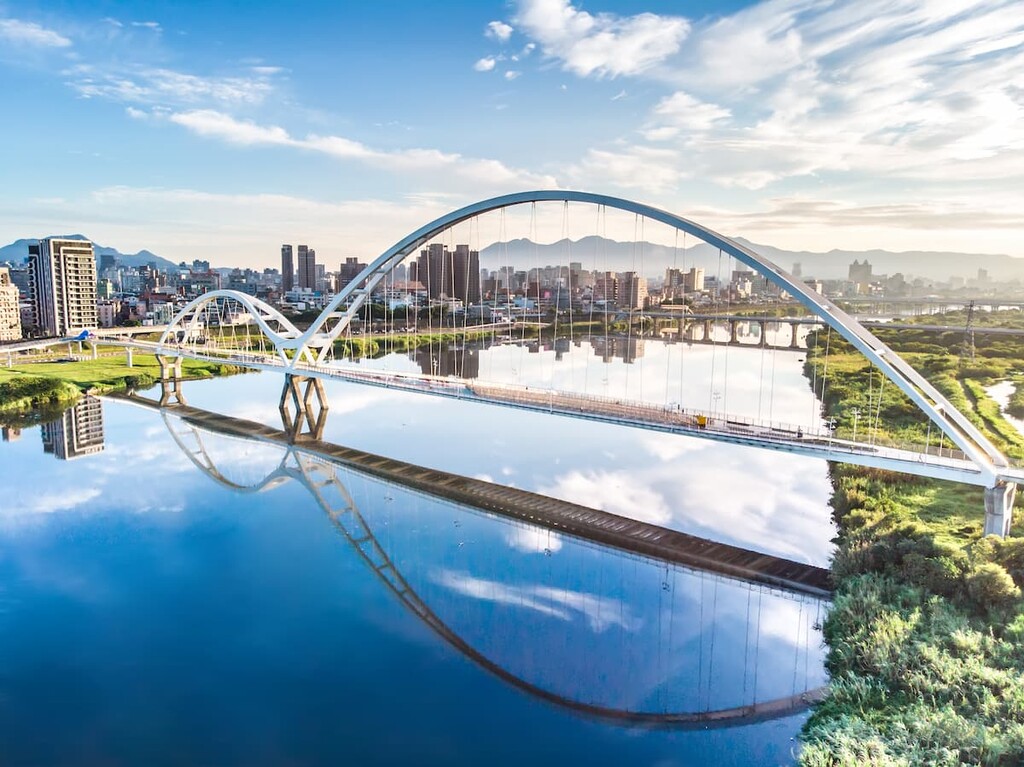
New Taipei City's land area is vast as it surrounds the outlying regions of Taipei. On New Taipei City’s north coastline, you can find Laomei Green Reef (老梅綠石槽). It features strips of volcanic rock folds coated in algae that look like long, furry green fingers. As the landscape in the city is uniquely striking, it draws crowds of visitors, especially after heavy rains which support its abundance of algae.
Finally, if you venture to the east of New Taipei City, you can find the old mining hillside town of Jiufen (九份). One of the main attractions of this ancient gold mining community is the presence of old, wooden tea houses that overlook New Taipei City's eastern shore. It is easy to get lost in Jiufen’s pretty maze of ancient alleyways that are lined with vibrant red Chinese lanterns as you marvel at the town’s Japanese-inspired architecture.
Visitors can reach Taoyuan City using the Taiwan High-Speed Rail (HSR) and local express train (TRA) from any of Taiwan’s major cities.
From there, take the Taoyuan Bus 506, which departs from the Taoyuan Bus Terminal. The terminal is just a 10 minute walk from Taoyuan Railway Station (TRA). This bus will take you directly to Dongyanshan National Forest Recreation Area.
For those wishing to drive to Dongyanshan National Forest Recreation Area, you’ll just need to make the 44 km (27 mi) journey from Taoyuan City.
Explore Dongyanshan National Forest Recreation Area with the PeakVisor 3D Map and identify its summits.








